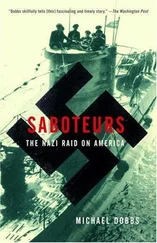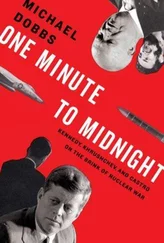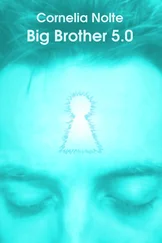A nearby strand of barbed wire served as a collection point for the symbols of Soviet occupation: passports, conscription papers, Communist Party cards. Day and night Lithuanians threw piles of Soviet propaganda booklets on the bonfires in front of the parliament building. Even if their cause was doomed, the defenders of independence had the satisfaction of keeping warm by the embers of the complete works of Lenin and multivolume histories of the Soviet Communist Party. Many people brought their children along with them, so that they could describe Soviet tyranny to their children and grandchildren.
Bundled up against the cold, a three-year-old girl named Zhivele Kaslauskas listened to her parents discuss Lithuania’s chances of gaining full independence, before taking her home to bed. “It may take years, but in the end I am sure we will win,” said her father, Alvidas. “This empire cannot last. One day Russians themselves will rise up against it.” 31
Inside the legislature the atmosphere was tense and claustrophobic. Lithuanian democracy was less than a year old, and already it was being forced to defend itself from armed attack. The deputies were scared. “If the military attacks, we’re going to become human torches. Look at all this wood and fabric,” whispered one terrified legislator as rumors spread of an imminent assault. 32The spectacle of the freely elected representatives being issued gas masks and hunkering down behind concrete barricades was both shocking and ominous.
Soon such a sight would become commonplace, from Tallinn to Tbilisi, from Moscow to Sarajevo. Big Brother refused to go quietly, without a fight.
THE BLOODSHED IN VILNIUS CAUSED a wave of revulsion and apprehension throughout the Soviet Union. There had been a lot of speculation about “a move to the right” by Gorbachev, but it was difficult to tell exactly what was going on behind the Kremlin walls. Finally, everything seemed clear. The reformer was turning his back on his own reforms. The sick joke about pere-stroika (restructuring) giving way to pere-strelka (a shoot-out) was in the process of being realized.
The time had come for a final parting of the ways between Gorbachev and the radical intellectuals, who had been his most enthusiastic supporters during the early stages of perestroika. As news of the massacre outside the television tower spread, they poured onto the streets of Moscow and other cities, carrying banners with slogans like “Gorbachev Is the Saddam Hussein of the Baltics!” and “Give Back the Nobel Peace Prize.” Yuri Afanasiev spoke for many Moscow intellectuals when he blamed the killings on a “dictatorship of reactionary circles” made up of the military, the KGB, and the Communist Party. “And at the head of that party dictatorship stands the initiator of perestroika, Mikhail Sergeyevich Gorbachev,” he added bitterly. 33There was an upsurge in resignations from the Communist Party, beginning with the entire staff of Moscow News , one of the flagships of glasnost.
When the Soviet parliament debated the events in Lithuania the following day, Gorbachev was unrepentant. He insisted he had known nothing about the violence until it was over, “when they woke me up.” But he refused to criticize the army’s decision to provide military assistance to the self-appointed National Salvation Committee, whose members did not even have the courage to identify themselves. Indeed he put the blame for what had happened on Landsbergis and other Lithuanian leaders, accusing them of “violating” the Soviet Constitution.
“I don’t see how we will make progress with such people in charge,” he told the deputies. “Lithuania has treated us like a foreign country.” 34
There were only two possible explanations for the line that Gorbachev was taking, and both were equally disturbing. Either the commander in chief was in control of his own security forces, or he wasn’t. In the first case he was the accomplice of hard-liners, who were attempting to mount a coup against a democratically elected parliament. In the second case he had become their puppet. By refusing to discipline his subordinates, he had effectively condoned a flagrantly illegal act. His failure to condemn the violence was an implicit invitation to the would-be putschists to try again.
Documents unearthed following the failed coup of August 1991 demolish the cover story about the commander of the Vilnius military garrison’s responding to an “appeal” from the National Salvation Committee. The decision to use force was made not in Vilnius but in Moscow, where Soviet military leaders had been preparing for such a confrontation over many months. A few semiliterate handwritten jottings discovered in the diary of Defense Minister Dmitri Yazov and dated March 22, 1990—less than two weeks after Lithuania had declared its independence—provided an insight into what was being planned:
• Issue a warning. Not recognize their laws! Bring pressure to bear.
• If necessary, act resolutely!
• What are we to draw on? The old government cannot be resuscitated.
• To draw on the committee and set up committees everywhere!
• To be ready to take the TV center?! 35
A subsequent diary entry, for April 9, 1990, shows that Soviet leaders were considering the imposition of direct presidential rule on Lithuania at that time. But Gorbachev opposed the use of force, partly for fear of offending international public opinion. “We cannot take the strap to Lithuania’s ‘behind,’ ” Yazov quoted him as saying. “The issue of Lithuania far transcends the framework of the Union! Is the Lithuanian issue becoming a world-international issue?”
It turned out that the puppeteers in Moscow had planned everything in advance, including a “general strike” by ethnic Russians and an attempt to storm the parliament building:
• General strike! A telegram will be sent for them to abolish their resolutions, restore the constitution.
• About 200 armed men, in the Hall and the Supreme Council.
• An appeal will be made.
• The publishing house belongs to the CPSU (Soviet Communist Party)—capture it!
On the Saturday that the KGB dispatched the Alpha Group to capture the television center, Kryuchkov drove to the Kremlin for a secret meeting with his fellow plotters. According to Kremlin records, the session began at 7:15 p.m. and broke up at 2:10 a.m., shortly after the shooting had begun in Vilnius. 36
What is most intriguing about this meeting, which took place in the office of Gorbachev’s chief of staff, Valery Boldin, was the list of participants. In addition to Kryuchkov and Boldin, it included Valentin Pavlov, who was about to become Soviet prime minister, Oleg Baklanov, the head of the military-industrial complex, and Oleg Shenin, a Communist Party secretary in charge of organizational matters. These men were to become the key figures in the State Committee for the State of Emergency, which seized power from Gorbachev eight months later.
THE REMAINING LIBERALS in Gorbachev’s entourage were sickened by the use of military force in Lithuania and the president’s refusal to condemn it. They recalled Shevardnadze’s warnings of “an approaching dictatorship.” Now each of them faced a crisis of conscience. They could do the honorable thing and resign, leaving Gorbachev in the clutches of the hard-liners. Or they could stick with him in the hope that he would have a change of heart.
The president’s economics adviser, Nikolai Petrakov, chose to resign, after signing a collective protest letter to the Moscow News accusing a “regime in its death throes” of launching an “open war” on the republics. 37The foreign policy adviser, Anatoly Chernyayev, dashed off a long memo to Gorbachev, describing his sense of “torment” and “shame,” but never submitted it. 38Several other staffers, including the presidential press spokesman, Vitaly Ignatenko, were talked out of resigning by Yakovlev, who insisted that this was not the time to abandon the president. Meeting in Yakovlev’s office on Monday afternoon, the dissenters decided on a different course of action: They would persuade Gorbachev to fly to Vilnius and “bow before the dead.”
Читать дальше












